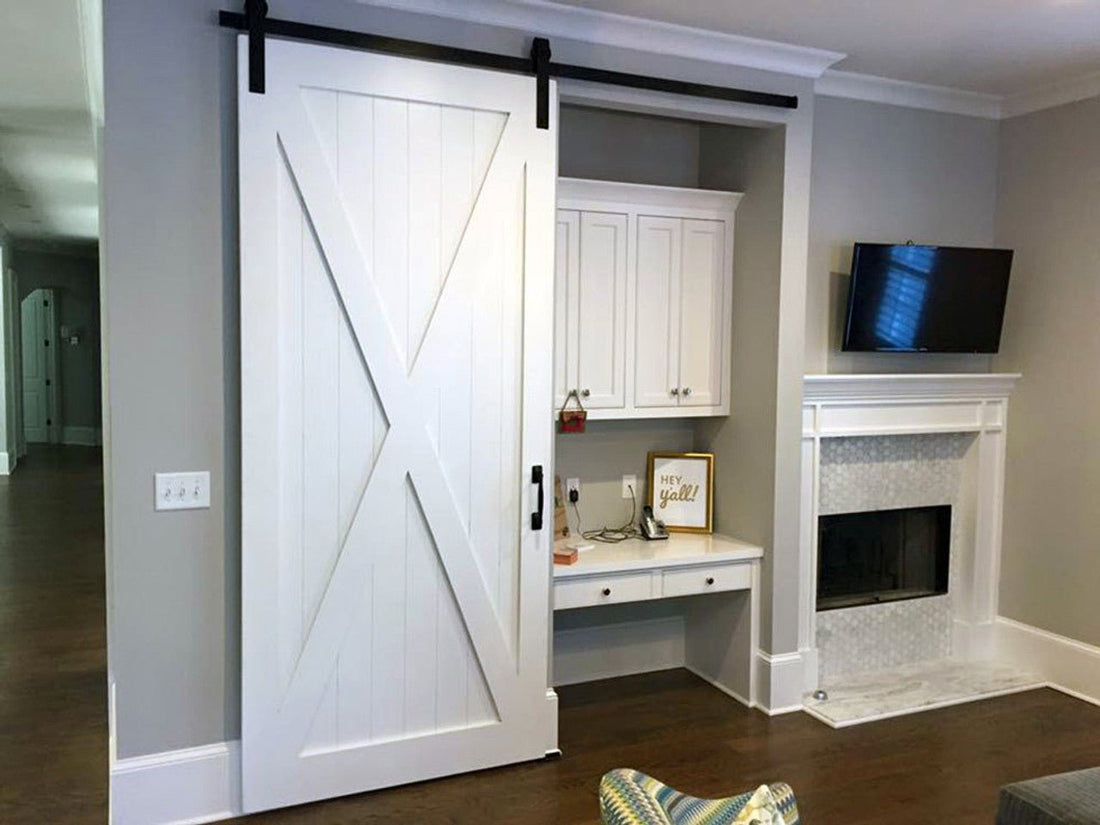
The Essential Guide to Interior Design Texture
When we think about interior design, we often jump straight to colors, furniture, or layout. But there’s an unsung hero quietly transforming spaces behind the scenes. The name of this superpowered contributor? Interior design texture.
Texture is what turns a house into a home. Layered interior design with multiple textures adds warmth, character, and depth without the necessity for bold colors or ostentatious décor. It could be the nubby weave of a linen pillow, the rough grain of a wooden barn door, or the soft gleam of brushed metal. Whatever you integrate, texture brings your space to life. It’s an effective way to create a sense of tactile, satisfying visual interest and tactile.
In this guide, we’ll explore how to use elements of interior design texture to elevate your home’s look and feel, room by room. It will put the spotlight on how choices like barn door materials and fabric elements can serve as functional and striking textural anchors.

Why texture matters in interior design
Texture works on a sensory level. It creates contrast, invites touch, and balances out minimal or neutral color schemes. In modern interiors, where we often opt for clean lines and muted tones, texture prevents spaces from feeling flat, sterile, or free from personality
The beauty of using texture is its subtlety. You don’t necessarily need bright colors or excessive décor to make a space feel warm and lived-in—just a clever layering of materials.
The 5 main types of texture in interior design
To design intentionally with texture, it helps to understand different forms of textures. Here are five core categories to keep in mind.
1. Hard textures
Think glass, concrete, tile, and wood textures. These materials add structure and often form the foundation of a room, feeling stable and powerful. A wooden barn door, a herringbone tile backsplash, or floating shelves in raw oak all incorporate hard texture.
2. Soft textures
This encompasses the world of fabric-based items like cushions, rugs, throws, and upholstered furniture. Soft textures create comfort and coziness. Think boucle chairs, wool rugs, or linen drapery to soften the feel of a room.
3. Reflective textures
Glass, mirrors, polished metals, and glazed ceramics fall into this category, being both hard and reflective textures. They bounce light around the room, making spaces brighter and more open. Chrome fixtures or mirrored cabinets offer both function and a textural edge.
4. Organic textures
These evoke nature and even biophilia, coming in the form of plants, clay pots, woven baskets, or natural stone. They bring in irregularity and raw beauty, softening modern lines with earthy appeal.
5. Patterned or Implied Texture
Subtle patterns or surface treatments can create a sense of texture, even when the surface is smooth. Think embossed wallpaper, fluted panels, or shiplap walls.
Creating a layered interior with elements of design texture
Layering is key to creating cohesion and richness with textures.
- Start with a neutral base. Think soft white walls, pale wood floors, or muted furniture, acting as a canvas to build texture from.
- Mix materials. Combine rough with smooth, soft with hard, and so on. For example, yse a natural wood barn door as an entry towards a linen sofa.
- Use contrast intentionally. Matte finishes against glossy surfaces, rugged textures next to polished ones—this visual friction creates interest without clutter.
Don’t be afraid to experiment. Even minimalists can—and indeed should—play with texture to prevent their homes from feeling flat.
Room-by-room design texture tips
Living Room
- A boucle throw or knit blanket on a sleek, leather sofa.
- A distressed, reclaimed wood coffee table or sideboard.
- Cushions in velvet or linen for softness and subtle sheen.
- A chunky woven rug underfoot to ground the room.
Bathroom
- Use bumpy or craggly wall tiles to add visual depth.
- Introduce natural fiber bath mats or hand towels.
- Include stone accents like a concrete basin or marble countertop.
- Add a wooden stool or rattan baskets for warmth.
Kitchen
- Combine wooden beams or shelves with sleek stone countertops.
- Use matte cabinet finishes and brushed metal fixtures.
-
Add ceramic tiles with a handmade finish or irregular glaze.
Statements with textured interior doors
One of the easiest and most impactful ways to add texture? Through architectural elements—particularly doors. Barn doors, whether in sliding or bifold models, are not only practical (especially in open-plan or small homes), but they can act as statement texture pieces that tie an entire design together, complete with plentiful hardware options.
- Simple wood barn doors. Full of classic wooden character, knots, and grain—ideal for rustic or cozy minimalist homes.
- Painted smooth barn doors. Suited to Scandinavian or warm minimalist interiors; a soft finish in white, cream, or olive tones blends beautifully.
- Glass and metal barn doors accented. These bring an industrial and modern edge, offering texture through contrast—think frosted glass with black steel framing.
Beyond aesthetics, barn doors are space-saving solutions—no swing clearance is needed. That makes them spot on for small bedrooms, pantries, utility rooms, or even home offices where visual flow matters.
Final thoughts
Texture is one of the most powerful tools in interior design. It can transform simple spaces into warm, inviting household environments. Thoughtfully mixing materials, finishes, and surfaces, allows you to add significant character without leaning into visual clutter.
If you’re revamping a single room or redesigning your entire home, barn doors are a clever, functional, and super-stylish way to bring texture into the mix. With so many finishes and hardware options—from rugged to refined—they can suit any aesthetic and serve as a design statement in their own right.

